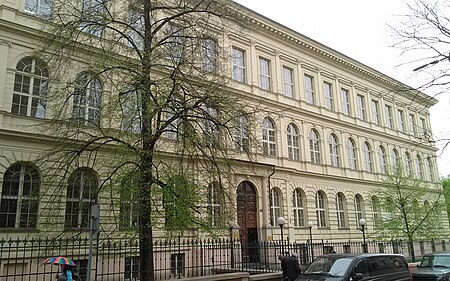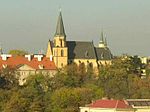First Faculty of Medicine, Charles University in Prague

The First Faculty of Medicine of Charles University (Czech: 1. lékařská fakulta Univerzity Karlovy) is one of five medical faculties of Charles University, Prague, Czech Republic. Founded in 1348 at the same time as the university itself, it is the oldest medical faculty in Central Europe and the 11th oldest medical institution in the world. Situated in the centre of Prague, the faculty provides education in all fields of general medicine. It is regularly ranked in the top 1% of medical faculties globally (See ranking below). It is one of the five medical faculties of Charles University, alongside the Second and Third Faculties, both in Prague, and faculties in Plzen and Hradec Kralove.It has two student associations. One for the Czech parallel (SMC) and one for the English parallel (LF1 MEDSOC). The student associations have their offices in Faust House and are responsible for helping new students get used to the university life as well as organise all the parties and activities, including Freshers Week every September. The faculty has recently established a surgical society, which envisions the nurture of aspiring surgeons from all years by providing research opportunities, away clerkships and workshops.
Excerpt from the Wikipedia article First Faculty of Medicine, Charles University in Prague (License: CC BY-SA 3.0, Authors, Images).First Faculty of Medicine, Charles University in Prague
Kateřinská, Prague New Town
Geographical coordinates (GPS) Address Nearby Places Show on map
Geographical coordinates (GPS)
| Latitude | Longitude |
|---|---|
| N 50.074341666667 ° | E 14.426847222222 ° |
Address
I. stomatologická klinika (I. stomatologická klinika)
Kateřinská
121 32 Prague, New Town
Prague, Czechia
Open on Google Maps










